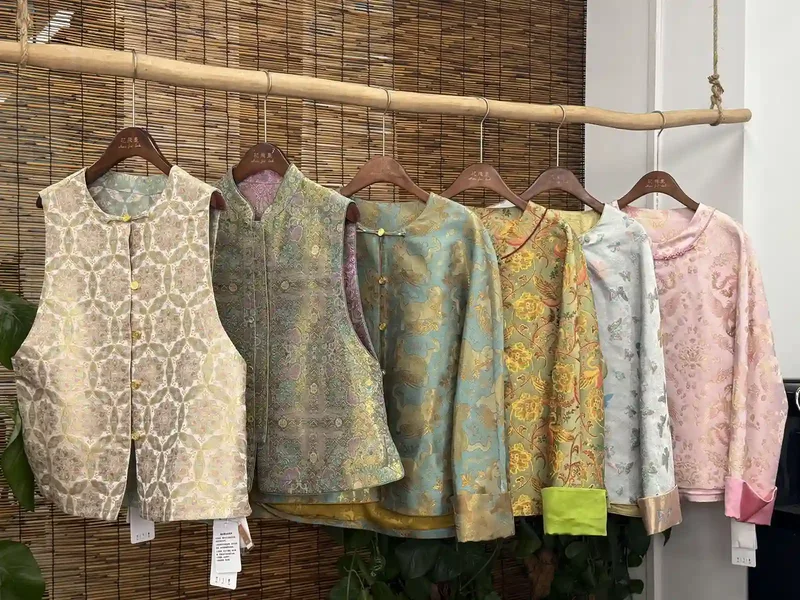
Song Brocade
Song brocade, also known as "Suzhou Song Brocade" because it is primarily produced in Suzhou, is a traditional Chinese silk handicraft.
Song brocade, known for its clear, beautiful colors and delicate patterns, is considered one of the most famous brocades.
In 2009, Song brocade was inscribed on the UNESCO Representative List of the Intangible Cultural Heritage of Humanity, which includes traditional Chinese silk weaving techniques.

Craftsmanship, Value and Heritage
Song brocade, handwoven using the "stitch knotting" technique, creates intricate patterns through the interweaving of multiple weft threads. Patterns are visible on both sides of the garment, allowing it to be worn both ways. Its rich colors and exceptional texture are remarkable.
Originally used by the imperial court during the Song Dynasty, Song brocade is a treasure from the Maritime Silk Road, carrying a millennium of cultural heritage. Its techniques are also used in calligraphy and painting decoration.
Today, Suzhou intangible cultural heritage inheritors are reviving traditional techniques, and SilkYue is actively promoting them, dedicating itself to China's traditional intangible cultural heritage.
-

Zodiac 45 Momme Song Brocade Vest
Read more -
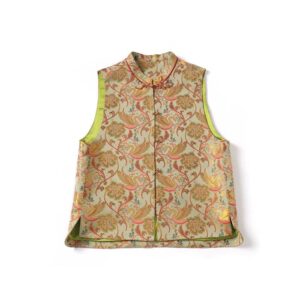
Swan Lake 45 Momme Song Brocade Vest
Read more -
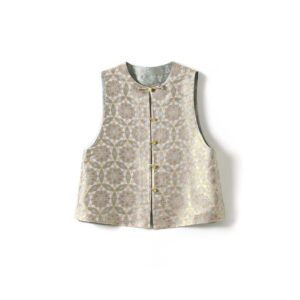
Baoxianghua Song Brocade Vest
Read more -
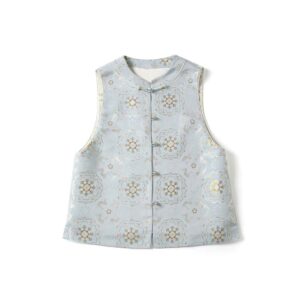
Baohua Benlu 45 Momme Song Brocade Vest
Read more -
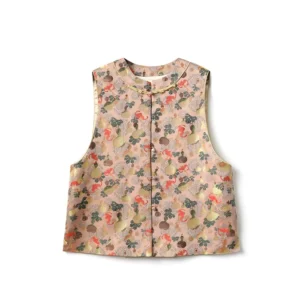
Gourd Song Brocade Silk Vest
Read more -
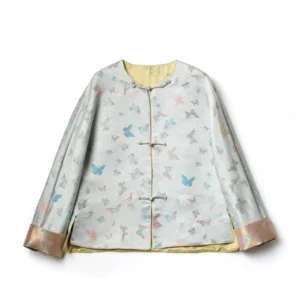
Butterfly Song Brocade Silk Jacket
Read more -
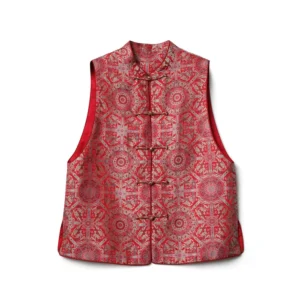
Red Bada Yun Song Brocade Silk Vest
Read more
Looking to buy fabric?
Customization and Innovation
Song brocade Historical Development
| Period | Key Developments | Usage & Significance | Major Events / Artifacts |
| Tang & Song Dynasties (7th–13th c.) | – Origins: Absorbed techniques from Shu Brocade, developing a distinct Jiangnan style – Technique: Early adoption of “compound weft-weaving” | – Clothing for wealthy elites – Mounting for scroll paintings (boosted by Song literati culture) | – Song-era Silk Weaving Illustrations depict Jiangnan silk production – Few surviving fragments, mostly from tombs |
| Yuan & Ming Dynasties (13th–17th c.) | – Integration of Mongol gold-thread weaving – More ornate colors, “Zhuanghua” embroidery techniques | – Imperial tribute – Buddhist temple banners & altar decorations | – Suzhou Imperial Weaving Bureau established – Ming records list hundreds of Song brocades seized from corrupt official Yan Song |
| Qing Dynasty (17th–20th c.) | – Peak craftsmanship under Kangxi & Qianlong (e.g., “3-oblique twill” weave) – Revival of antique Song-style brocades | – Dragon robes, palace furnishings – Book mounting (e.g., Siku Quanshu covers) – Exported to European nobility | – Qing Paradise Woven Tapestry in the Palace Museum – Export brocades in Victoria & Albert Museum (UK) |
| Modern Era (20th c.) | – Decline due to wars – Near-extinction of wooden loom weaving | – Limited use in religious ceremonies – Private collections | – 1921 records show only ~10 workshops left in Suzhou |
| Contemporary (21st c.) | – 2006: Listed as China’s intangible cultural heritage – Machine-made imitations rise; hand-weaving revived | – High-end fashion (e.g., APEC “New Zhongzhuang” attire) – State gifts, luxury products – Digital pattern archive projects | – 2014: UNESCO Intangible Cultural Heritage status – Qian Xiaoping’s team recreates Song-era “Diamond Lattice Brocade” – Suzhou Silk Museum establishes Song Brocade exhibit |
Song brocade Craftsmanship
Song brocade is characterized by its interwoven warp and weft threads, creating a vibrant pattern and reflecting its intricate craftsmanship.
Song brocade is hand-dyed using plants and minerals, a complex and rigorous process.
Song brocade inherits the techniques of Shu brocade, adding unique techniques such as weft color change and pattern drawing and polishing. Without increasing the number of threads, Song brocade achieves a unique horizontal color aesthetic.
Song brocade has two warps: the front warp and the back warp. Due to its unique weaving technique, it is also known as heavy brocade. Depending on the pattern, it is divided into three categories: large brocade, small brocade, and box brocade.
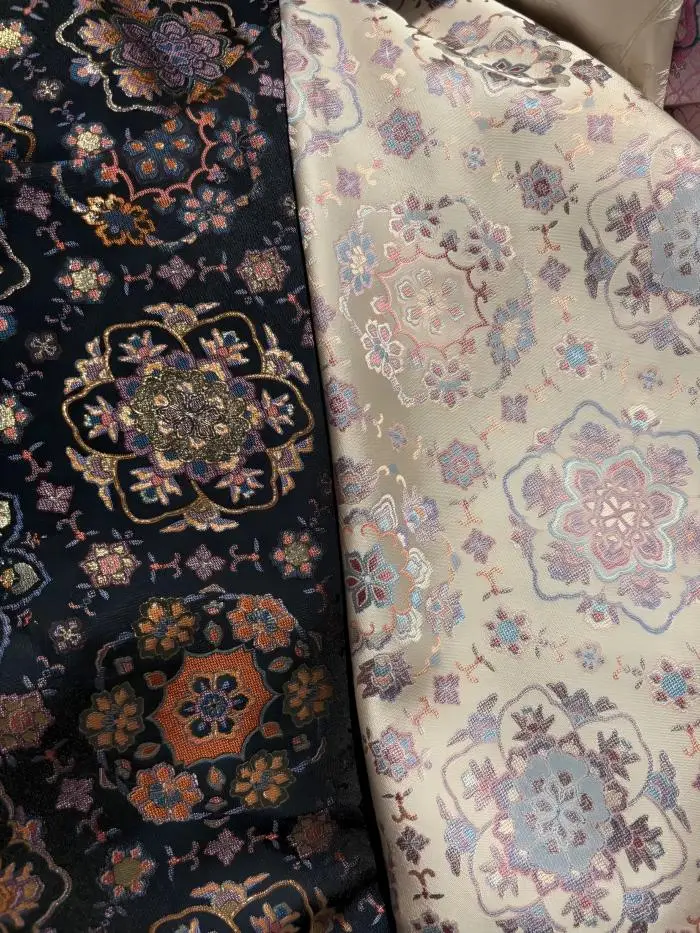
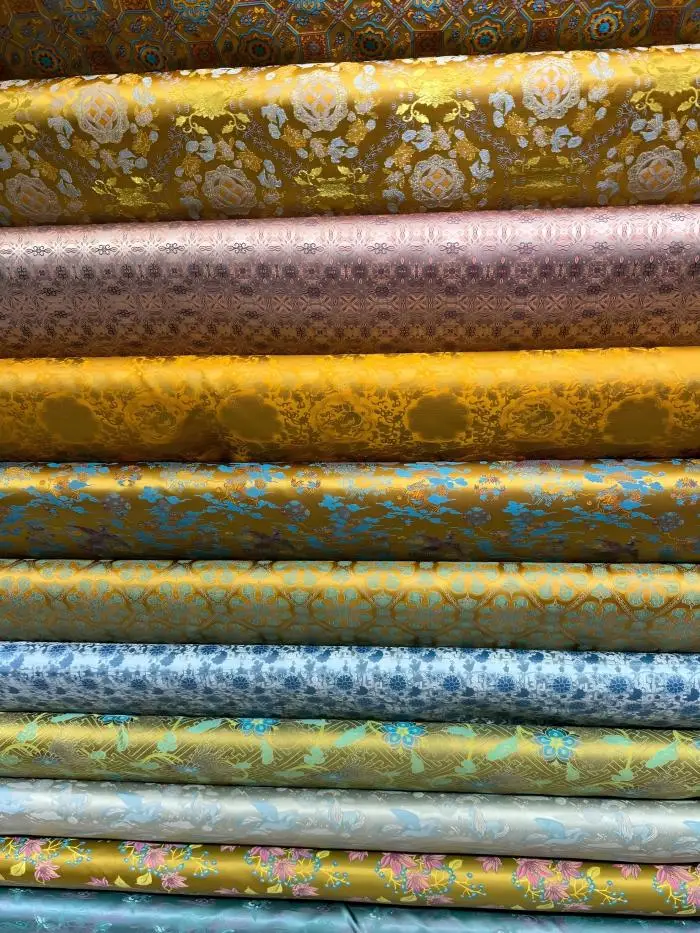
Song Brocade Varieties
There are over 40 varieties of Song brocade, distinguished by structure, craftsmanship, quality of materials, and fabric thickness. Broadly, they are categorized into large brocade, small brocade, and box brocade.
Large brocade: Large brocade is the most valuable and representative type of Song brocade. It uses a variety of dyed silks and gold thread for patterning and uses multiple strands of silk thread to embellish various areas. Large brocade is exquisite, with rich layers of color.
Small brocade: Small brocade is primarily used for mounting and is a derivative of mid-range and low-end items. It uses a single-layer, small jacquard weave with variously colored mulberry silk threads as the warp and raw silk as the weft, creating a variety of styles. After weaving, it is calendered with stone ingots.
Box brocade: Box brocade is a mid-range item. It is woven with mulberry silk, colored silk velvet, and cotton yarn. Its patterns primarily feature geometric patterns and small flowers, arranged symmetrically horizontally, in an orderly and orderly manner, with strong color contrast.
Song brocade Cultural Value
In traditional culture, Song brocade is not only a beautiful garment but also a cultural symbol, reflecting the aesthetics and status of the ancient upper class.
Song brocade’s patterns bear distinct Song Dynasty artistic characteristics. Unlike the rich and vibrant colors of the Tang Dynasty, it pursues a fresh, elegant, and subtle style.
Common patterns on Song brocade include tortoise shells, hydrangeas, sword rings, and ancient coin cases, imitating ancient geometric patterns. Imbued with rational beauty and a sense of order, it is deeply influenced by the “elegant culture” of Song Dynasty literati.
Song brocade also represents the ultimate creativity and skill of ancient artisans.

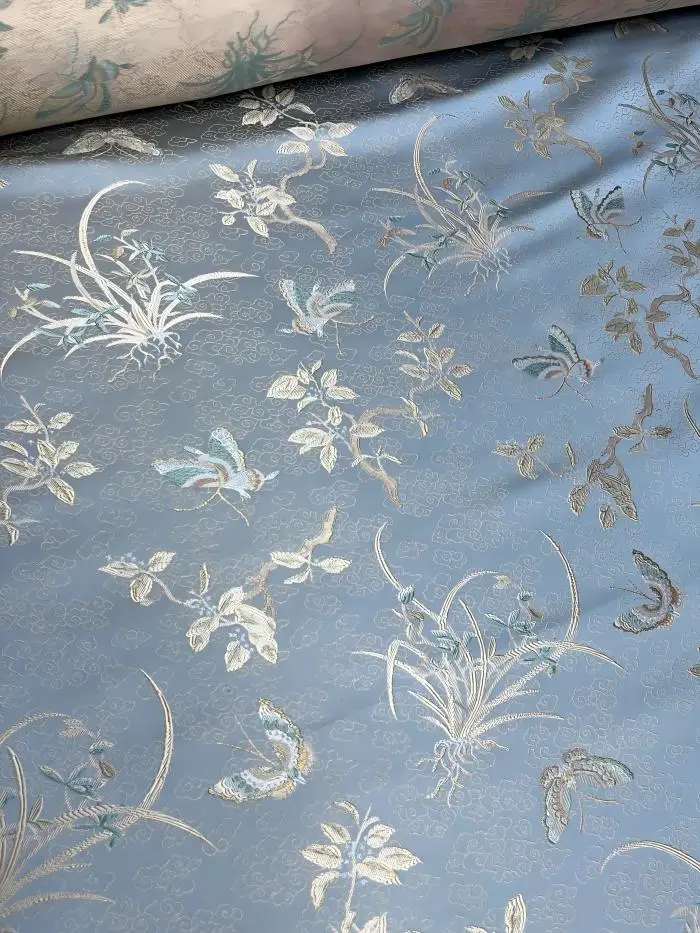
Song brocade Modern Inheritance
Song brocade, originating in the Song Dynasty and boasting a history of nearly a thousand years, is a living treasure of silk art and craftsmanship.
In modern society, Song brocade has transcended mere heritage and is now making its mark through innovation.
The core fabric of the “New Chinese Attire” worn by leaders at the 2014 APEC Beijing Summit was the improved and innovative Song brocade, becoming a hallmark of Chinese culture.
Today, designers are integrating Song brocade with modern fashion to create high-end dresses, handbags, accessories, homewares, and more.
